 Michael Jackson could be the latest star to have died from an accidental overdose of prescription medications. According to Life & Style, Jackson was “taking a cocktail of up to seven prescription drugs in the months before his death,” including the anti-anxiety drugs Xanax and Zoloft and the painkiller Demerol. The Jackson family attorney compared the King of Pop’s death to that of Anna Nicole Smith.
Michael Jackson could be the latest star to have died from an accidental overdose of prescription medications. According to Life & Style, Jackson was “taking a cocktail of up to seven prescription drugs in the months before his death,” including the anti-anxiety drugs Xanax and Zoloft and the painkiller Demerol. The Jackson family attorney compared the King of Pop’s death to that of Anna Nicole Smith.
While most celebrity drug deaths have been the result of either suicide or the use of illegal drugs, a surprising number of stars have died by accident — from medications you can purchase at the corner pharmacy. Here are 13 of the most famous:
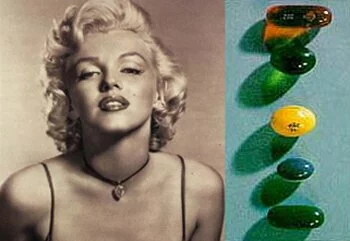
1. MARILYN MONROE. Elton John’s “Candle in the Wind” died from an overdose of sleeping pills — specifically, Nembutal and chloral hydrate [pictured]. Although Monroe’s death was officially listed as a suicide in 1962, many forensic experts and investigators now say the overdose was more likely to have been accidental.

2. ELVIS PRESLEY. Perhaps the most famous prescription-drug abuser of all time, Elvis died in 1977 from an overdose of medications while on the toilet in his Graceland mansion. Presley’s ex-wife wrote: “Presley was taking Placidyls [pictured] to combat severe insomnia in ever increasing doses and later took Dexedrine to counter the sleeping pills’ after effects.” Presley’s personal physician, Dr. George C. Nichopoulos, concluded: “Elvis’s problem was that he didn’t see the wrong in it. He felt that by getting [pills] from a doctor, he wasn’t the common everyday junkie…”
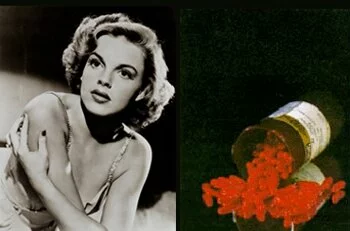
3. JUDY GARLAND. The Wizard of Oz star was found dead in her London bathroom by her husband in 1969. Coroner Gavin Thursdon said the cause of death was an accidental overdose of Seconal [pictured].
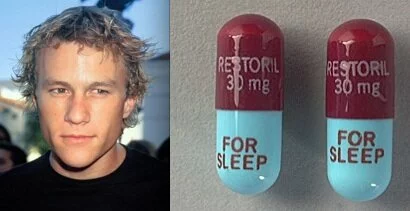
4. HEATH LEDGER. Found dead in a Manhattan apartment he had been renting on Jan. 22, 2008, the 28-year-old actor died of an accidental overdose of prescription drugs that included the painkillers OxyContin and Vicodin, the anti-anxiety drugs Xanax and Valium, and the sleep aid Restoril [pictured], according to the New York Times. Upon learning the findings of the New York City medical examiner, Ledger’s father stated: “While no medications were taken in excess, we learned today the combination of doctor-prescribed drugs proved lethal for our boy. Heath’s accidental death serves as a caution to the hidden dangers of combining prescription medication, even at low dosage.”
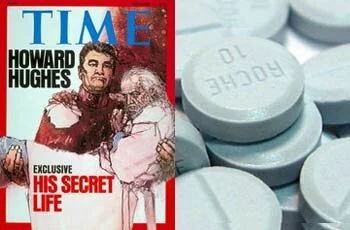
5. HOWARD HUGHES. The germophobic genius and subject of Martin Scorcese’s The Aviator died in 1976 in route to a Houston hospital from his Acapulco estate. Although the official cause of death was liver failure, his autopsy showed lethal amounts of codeine and valium [pictured] in his system.

6. ANNA NICOLE SMITH. According to Wikipedia, “Ultimately her death [in 2007] was ruled an accidental drug overdose of the sedative chloral hydrate that became increasingly lethal when combined with other prescription drugs in her system, specifically 4 benzodiazepines: Klonopin (Clonazepam), Ativan (Lorazepam), Serax (Oxazepam), and Valium (Diazepam). Furthermore, she had taken Benadryl (Diphenhydramine) and Topamax (Toprimate), an anticonvulsant GABA agonist, which likely contributed to the sedative effect of chloral hydrate and the benzodiazepines.”
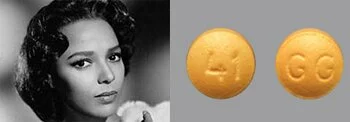
7. DOROTHY DANDRIDGE. The first African-American actress to be nominated for an Academy Award, Dandridge was found dead in West Hollywood in 1965 from an overdose of Imipramine [pictured], a tricyclic antidepressant. It’s believed she improperly combined the medication — which she took for her bipolar disorder — with pain medication she received after breaking an ankle.
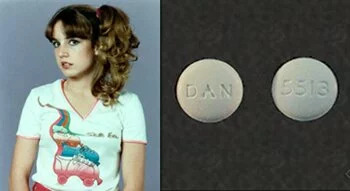
8. DANA PLATO. The long-troubled Diff’rent Strokes star died from an accidental overdose of Vanadom [pictured] and Vicodin at her mother-in-law’s Oklahoma home in 1999.
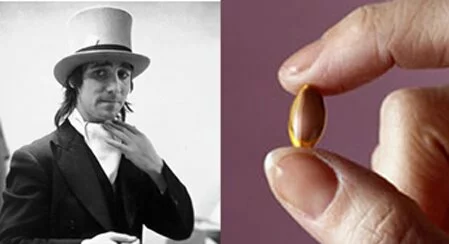
9. KEITH MOON. The Who drummer died in 1978 from an accidental overdose of Heminevrin [pictured], a medication taken as part of a program to wean him off alcohol.
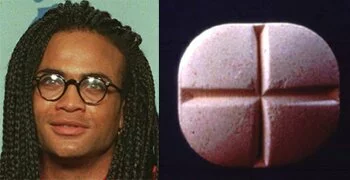
10. ROB PILATUS. The Milli Vanilli star, disgraced after the public learned the music duo did not actually sing on its hit records, died in 1998 of an accidental overdose of a medication (reportedly methadone [pictured]) designed to help him with drug withdrawal symptons.
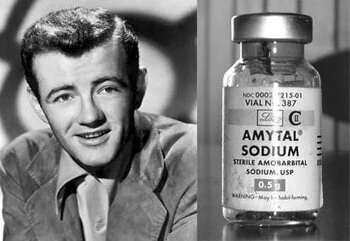
11. ROBERT WALKER. Perhaps the most bizarre accidental prescription-drug death. The star of Hitchcock’s Strangers on a Train died mysteriously in 1951 after being given an injection of the “truth serum” sodium amytal [pictured] by psychiatrists at his home.
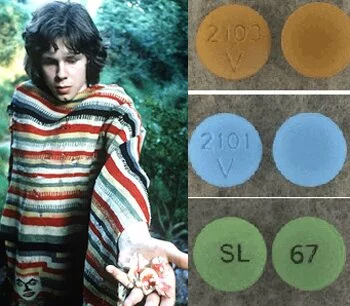
12. NICK DRAKE. The influential singer-songwriter died at his childhood home in the U.K. in 1974 from an accidental overdose of the antidepressant amitriptyline [pictured].
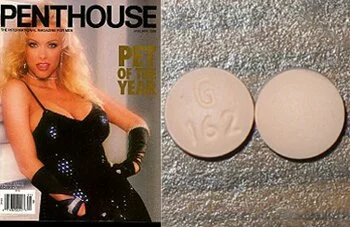
13. PAIGE SUMMERS. The 1998 Penthouse Pet of the Year was found dead in her fiance’s home in 2003 from a combination of the painkillers codeine and oxycodone. Her death may or may not have been an accident; some have pointed a finger at fiance Bracey Bobbitt — who was a pharmacist.
[Note: This is an update of a 2008 post.]
Doctors in California and Texas are currently under investigation for illegally prescribing Ledger the painkillers Oxycontin and Vicodin, according to reports.
Whether the individual doctors did anything wrong, however, patients can get in trouble when they go to multiple doctors — which is increasingly the case in today’s world.
That’s why it is important to take the safety of your drug regimen in your own hands through a sophisticated tool like PharmaSurveyor (now in beta) or some of the other drug-interaction tools currently on line, like this one at DoubleCheckMD .
The report from the medical examiner is in: Heath Ledger died from the “the combined effects of oxycodone, hydrocodone, diazepam, temazepam, alprazolam and doxylamine.” The brand names for the drugs that were in Ledger’s system are OxyContin, Valium, Xanax, Restoril, Unisom and Hydrocodone.
To be clear, Ledger didn’t die from an overdose of prescription drugs. He died from Adverse Drug Effects (ADEs) — a fatal reaction to the combination of medications he was taking.
As Dr. Kevin Pho of Kevin, M.D. surmises: “Two narcotics, three benzodiazepines, and one sedating antihistamine. If a single physician was responsible for these prescriptions, that’s a serious error in judgment. It is more likely that Mr. Ledger received multiple prescriptions from different physicians around the world, perhaps not knowing the danger these medications have when taken together.”
You might argue that no one in their right mind would take six different meds, even in prescribed doses, at the same time. But you’d be surprised how many Americans do. The majority of Baby Boomers, in fact, are on a regimen of four to six drugs.
In a world where pharmaceutical companies spend $60 billion annually on advertising and promotion, is it any wonder that we now believe there is a “pill for every ill” — and sometimes six?
Late last year, the FDA reported that ADEs, and deaths associated with them, have nearly tripled in the past decade. The FDA acknowledged at least 15,000 deaths are caused annually by drug effects, and conceded that many more go unreported.
How many more? The Journal of the American Medical Association has estimated that ADEs kill well over 100,000 people each year. Erick Von Schweber, founder of PharmaSURVEYOR, goes further — claiming ADEs are the third leading cause of death in the United States, responsible for more than 200,000 deaths each year. Of these, he says, at least 150,000 could be avoided if patients, their doctors and pharmacists were more careful in determining patient drug regimens.
“If you look at people’s drug regimens,” Von Schweber explains, “when they take not just one drug but multiple drugs, not only do they have interactions among drugs that can be harmful — can be fatal — but also there are risks involved in each individual drug. So even if the drugs are interaction-free, the risk is [compounded].”
“The barrier is complexity,” Von Schweber continues. “The typical senior, on a regimen of eight drugs, can have as many as 40 trillion alternate regimens to choose from that vary widely on ADEs … The patient, their family members and their physicians and pharmacists have had no means to navigate this … no decision support to identify the regimens that make the best trade-offs for the individual patient.”
Von Schweber’s PharmaSURVEYOR, which is in private beta with a launch planned later this year, promises a solution to this problem. Using Semantic Web technologies, the free-to-consumer Web application will take FDA data and combine it with information submitted by users, ensuring them that their drug regimens are safe — or warning them of their dangers. Here’s a sample profile a user might receive:
Until a solution like PharmaSURVEYOR is widely available, however, it is critical for patients to let their doctors know all of the drugs they are taking, as well as the dosages and quantities. Don’t be afraid to get a second opinion — and discuss your regimen with your pharmacist as well.
It seems clear that if Heath Ledger knew the combination of drugs he was taking might kill him, he never would have made such as tragic mistake. Let’s hope Ledger’s death can at least provide a lesson for others.
-
 Subscribe in a reader
Subscribe in a reader -
Search Blog Posts
-
-
-
How to Safely Buy Prescription Drugs Online from Cary Byrd on Vimeo.
-
Archives
-
Our Healthcare100 Ranking